

A Song For You: The Evolution of the Karaoke Machine
| Karaoke - a familiar and fun activity that allows you to bring out your inner popstar. From children to adults, in groups or even alone, anyone can sing their hearts out with the help of a karaoke machine. These machines are familiar sights at karaoke boxes, bars, and at community centres, but do you know the history of how these now-ubiquitous machines came to be? |
|
The term karaoke (カラオケ) is actually a portmanteau of two words - ‘karappo (空っぽ)’ which means ‘empty’ in Japanese, and ‘okesutora (オーケストラ)’ meaning ‘orchestra.’ Originally, it was used only in the broadcasting scene to refer to pre-recorded music accompaniment on discs or tapes - broadcasters could use these pre-recorded tunes as they were readily available, cheap, and did not require much attention by sound engineers on air. Later, musician Daisuke Inoue, who played guitar for amateur performers, invented a type of device to reproduce these pre-recorded accompaniments using an eight-track tape. He was inspired to make such a device when a client invited him to back him during a performance that Inoue himself could not attend. His coin-operated machine made it so that even without live back-up musicians, amateur singers could still sing accompanied by “real” music. He began renting these machines to bars in Kobe in 1971, and they soon proved popular with the public.
Though his early karaoke machine inspired a new, booming industry, and can be considered one of the most influential and well-loved inventions in recent history, Inoue himself never profited directly from it. He did not patent his invention and so, others were able to freely build on his prototype and develop more advanced karaoke machine systems. Inoue worked on his other pursuits instead and it was not until the mid-1990s when, interestingly enough, a Singapore-based karaoke TV channel re-discovered his link to karaoke. He has since gotten recognition for his contributions, receiving many tributes and awards, including being described as one of “The Most Influential Asians of the Century” by Time Magazine in 1999. The karaoke machine has humble beginnings as a simple eight-track machine parked at drinking establishments, but now many of us are familiar with dedicated establishments that are commonly known as “karaoke boxes.” These establishments consist of many private rooms equipped with a karaoke machine. Customers can rent these rooms with their friends and sing to their heart’s content without worrying about being seen or heard by other customers. Some karaoke boxes offer a wide range of food and drinks; some even offer specialties exclusive to their chains and others even have buffets! On the premium end of the spectrum, customers can even rent karaoke suites in which they can sing while enjoying course meals prepared by a professional chef! |
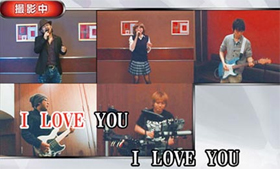 © Web Japan 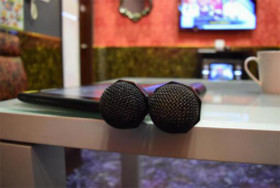 © photoAC 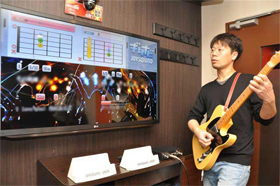 © Web Japan 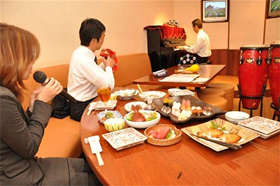 © Web Japan |
|
Aside from food and drinks, some karaoke boxes in Japan have rooms that are designed to offer customers a unique experience. Customers can live out their pop idol dreams in Hollywood-themed rooms where they can strut on a stage in a club-like room, or feel like a musical theatre star playing on a grand piano in a luxurious room. Bathroom singers will enjoy karaoke rooms that come with foot baths, allowing them to soak their feet while singing their songs on a high-tech system that they cannot install in their own bathrooms at home! Anime-themed rooms are also common in Japan; in such rooms, fans can sing anime songs while surrounded by their favourite characters.
Karaoke systems have also become more technologically advanced throughout the years, allowing customers to do a lot more than just sing. In the past, machines could only hold a limited number of tracks but now, systems have such a wide variety of songs that customers can go from singing enka tunes from the 1950s one minute, to the latest pop music releases the next! Customers are not limited to songs in one language either, and many modern systems have a large catalogue of popular songs in languages like English, Mandarin Chinese, and Korean to cater to customers’ varying tastes. With an overwhelming abundance of choices, do you ever wonder what songs are the most popular with customers? In fact, anime songs enjoy a lot of attention at karaoke boxes! A company that runs popular online karaoke services ran a survey of the top anime songs at karaoke in 2020 found that the top anime song chosen by guests was, unsurprisingly, LiSa’s “Gurenge.” This song served as the opening theme song of wildly popular 2019 anime Kimetsu no Yaiba, which is also known as Demon Slayer to English fans. Amazingly, the second most popular choice on the list was Yoko Takahashi’s “A Cruel Angel’s Thesis,” which served as the opening theme to the anime series Neon Genesis Evangelion. This series and the song was released more than 20 years ago in 1995, so the longevity of its popularity at karaoke serves as proof of the series’ impact and influence on the public. Japanese manufacturers also have elevated karaoke systems so that they are more than just musical accompaniments for those who want to sing. Newer systems come with cameras so that customers can sing duets with other customers across the country when linked up to the internet. Furikura (a portmanteau which combines the words furitsuke/振り付け which means ‘choreography’ and karaoke) capabilities have also been fitted to some systems. This allows customers to follow videos of popular idols explaining their dance moves while singing. Those who prefer to sing in the comfort of their own homes can also purchase home karaoke systems, so that they can enjoy all these hi-tech features - without a time limit! |
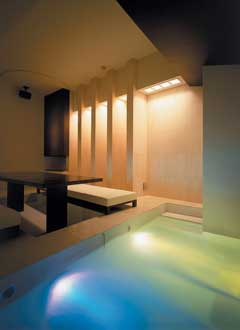 © aria blu TOKYO 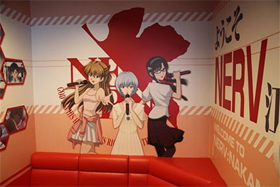 © khara 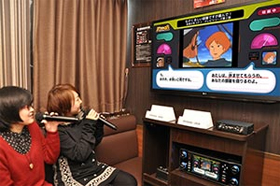 © Nippon Animation Co., Ltd. (C) 2012 NBGI 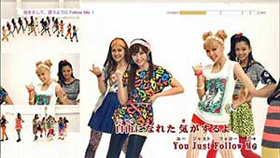 © 2013 Daiichikosho Co. |
| Not only is it a fun activity, singing karaoke together with friends and family can help deepen bonds as well. From Japan to the world, many have found immense enjoyment and positive benefits in singing karaoke! |
Resources
|
Ayer, P. (1999). Daisuke Inoue. Retrieved 25 February 2021, from https://www.webcitation.org/5iPUQdAJQ?url=http://www.time.com/time/asia/asia/magazine/1999/990823/inoue1.html |
|
Japan Creative Centre 4 Nassim Road, Singapore 258372 +65 6737 0434 / jcc@sn.mofa.go.jp https://www.sg.emb-japan.go.jp/JCC/ Nearest parking at Orchard Hotel & Delphi Orchard |
 |